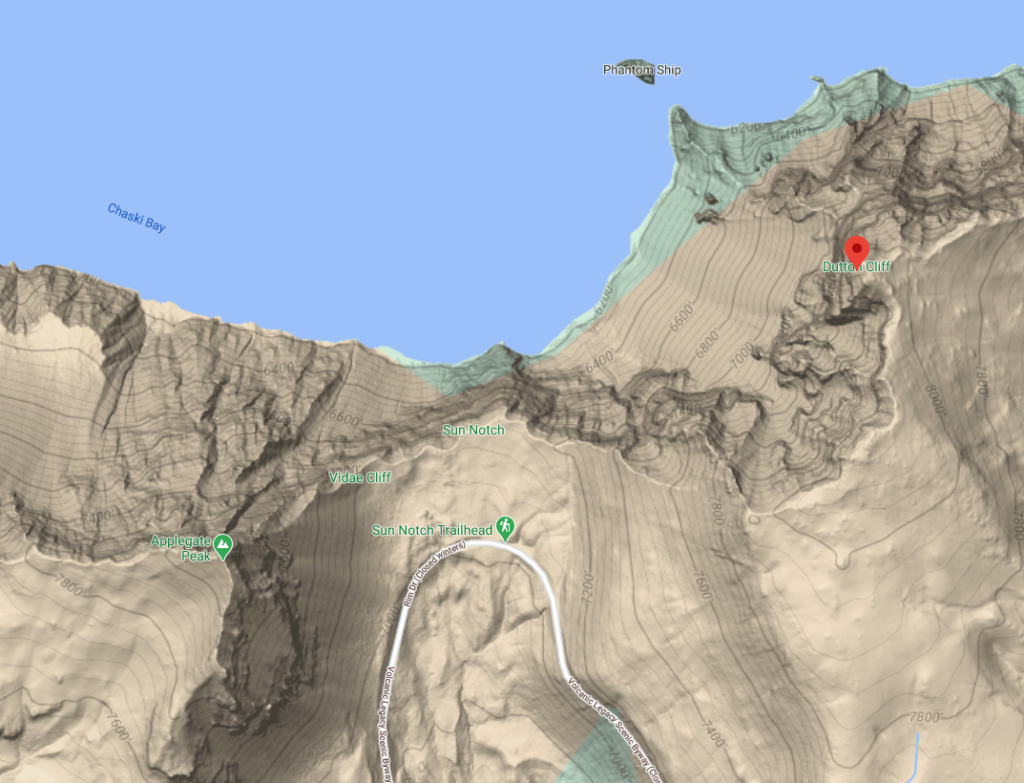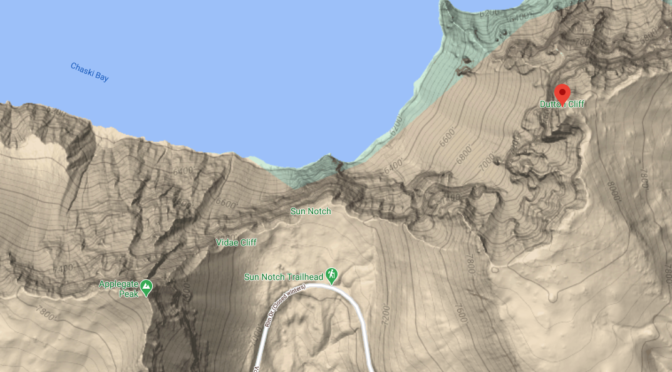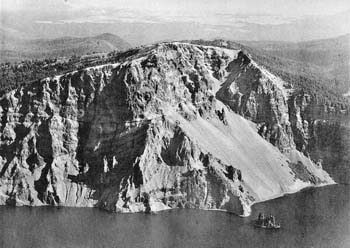Dutton Cliff – Prominent Geological Features of Crater Lake National Park
Dutton Cliff and Phantom Ship. The triangular cliff in the center of the picture is the filling of a vent, possibly the oldest on Mount Mazama. From this, the Phantom Cone was built, of which Phantom Ship is part. The lakeward dips of the lavas and breccias of this cone are clearly shown. After extinction, the Phantom Cone was eroded and then buried by flows from the main vents of Mount Mazama. Note unconformity on the east (left) side between the Phantom and Mazama lavas. A second unconformity, among the Mazama flows, appears higher up the cliff. Thin glacial deposits occur at this horizon, and water seeps issue from them. (Photograph by U. S. Army Air Corps.)
No part of the walls of Crater Lake is more impressive than the tremendous Dutton Cliff, which rises almost 2000 feet above the water. Here the somber lava flows are separated by brown and brick-red layers, mostly a few feet thick though reaching a maximum thickness of more than 80 feet, which seem at first sight to be coarse tuff breccias. Careful study shows that all but a few of they brighter layers are the slaggy, autobrecciated tops and bottoms of the flows themselves. It is enough to see how the laws grade imperceptibly into the breccias and to note how they send irregular fingers upward into …. [The Main Andesite Cone of Mazama: Interbedded Andesitic Pyroclastic Rocks, The Geology of Crater Lake National Park, Oregon (1942) by Howell Williams]

Other pages in this section
*** previous title *** --- *** next title ***



